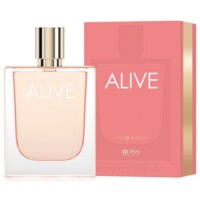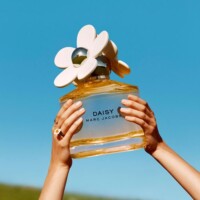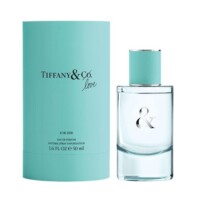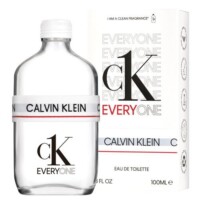
Vincent DELAVENNE: VP Packaging Coty Luxury
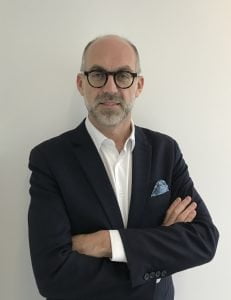
With 25 years’ experience in packaging, mainly in the luxury sector, Vincent Delavenne, Vice-President Packaging, Coty Luxury Division, reveals all the aspects of his job to us. Shiseido, Bvlgari, Oriflame, Dior, Unilever followed by Coty, working in the perfume, makeup and skincare categories, a host of missions undertaken in France, in Switzerland and in China which have provided him with precious knowledge and know-how in the art of packaging. Encounter.
Why did you choose to join the École Supérieure d’Ingénieurs en Emballage et Conditionnement (Packaging Engineering School)? Have you any particular affinity with the packaging field?
I was looking for an engineering school and teachers from the University of Reims spoke to me in a somewhat inspiring manner. From the word ‘go’ right up until now, I’ve never regretted my choice. Studying everyday products and formalizing constraints have played a role in my passion for this industry.
You graduated as a quality engineer yet you quickly became Packaging Manager for Shiseido. What did you enjoy when you took your first steps in the world of luxury?
I found my chosen field. I had the good fortune of being hired by a great packaging professional. Thanks to him and my former colleagues, I learned all the ropes of the trade: the techniques, the different departments to work with, project management, how to resist stress and a taste for innovation, in particular for Jean-Paul GAULTIER Le Mâle.
Five years in China for Dior then Unilever, what did you learn there as regards methods?
Everything was new to me, the continent, the culture, the psychological approach as well as the human relationships for myself and for my Chinese colleagues. So many differences but one fundamental rule: it’s up to you to adapt. In extremely hierarchical professional relationships, you need to understand really quickly when a yes… means no! The other main cultural difference is in the opportunity to be able to give your opinion on the aesthetical aspect of things. However, when a decision’s taken, it generates incredible motivation and gigantic energy. Having experienced it, I’m able to comprehend the great diversity of world cultures.
On return to Paris, you joined Coty where you’re the VP Packaging, Luxury Division.
At Coty, beauty sector turnover stands at 9 billion €, I’m in charge, along with my team, for developing the packaging for the beauty brands Boss, Calvin Klein, Gucci, Tiffany, Burberry, Marc Jacobs, Lancaster, Philosophy, Mexx, Bruno Banani, and a host of others. This means taking into account the technical aspects of packaging development, briefing, determining costing, managing projects, quality, looking out for novelties, all aspects of sustainable development, and industrializing products. We also handle all contacts with suppliers, and the various ordering parties, where choices are made based on a subtle mix of everyone’s technical constraints, purchasing strategy and availabilities.
Could you initiate a brand packaging project based solely on the discovery of a supplier innovation?
It’s the essence of our profession. Supplier innovation only exists if it can be used by a brand and a brand only exists because it stands out! The whole art of packaging is to recognize an innovation, select it based on the spirit of the brand or brands it represents and bring it to fruition. A perfume bottle with 10% of post-consumer recycled glass (PCR), like in CK EVERYONE, is one of my team’s latest accomplishments. Here, we’ve got real coherence between a glass supplier’s eco-friendly commitment where CO2 emissions are reduced and a brand’s message. This is a major innovation in so far as we were the first to use it for large quantities and, moreover, to receive the Cradle to Cradle certification which we’re really proud of!
What’s the greatest change you’ve been faced with?
The sustainability aspect is a revolution which began slowly a very long time ago but which is far from over. It accelerates in line with the frequent crises we go through: climate, oceans, globalization, COVID, etc. A lot of luxury codes are in the process of changing and packaging will always be the messenger for these codes. It’s up to the packagers to appropriate them to apply them to their products.
A professional anecdote?
Amongst others, I remember the first time that, as a young engineer, I signed my first-ever plastic tooling plan which held me technically liable and the substantial investment which it incurred! I spent quite a few nights rechecking assembly dimensions! It was for a gift set of Jean-Paul Gaultier miniatures
You’re an engineer by profession, an art lover, is this combination instrumental in integrating a stylistic requirement into the technical one in your job?
Every single experience can be useful in a career whether they’re sportive, culinary, artisanal, etc. But, above all, you need to get involved in the sector you choose so as to understand it and anticipate its future needs. It takes a year and a half on average to release a perfume with a new design. So, you have to imagine what’s going to be “in fashion” in a year and a half’s time and will remain in fashion for 10 years or more. You have to be in tune with the times and anticipate the ones to come.
The most exquisite historical packaging that you’ve set eyes on?
In our line of work, the most complicated products to package are liquid ones. So, I’m always impressed by two types of very ancient packaging, and you’re definitely going to smile: the Mediterranean amphora and its clay seal replaced by the Gallic barrel. But, closer to our era, nothing will ever replace the transparency, the dazzle and the beauty of glass, down to its very fragility.
How do you think your profession will evolve?
Our profession must propose novel solutions as regards sustainability, and there’s at least 20 years of work to be done. We need to reinvent everything, fast, very fast!
A dream to fulfil?
To pass on, transmit.



